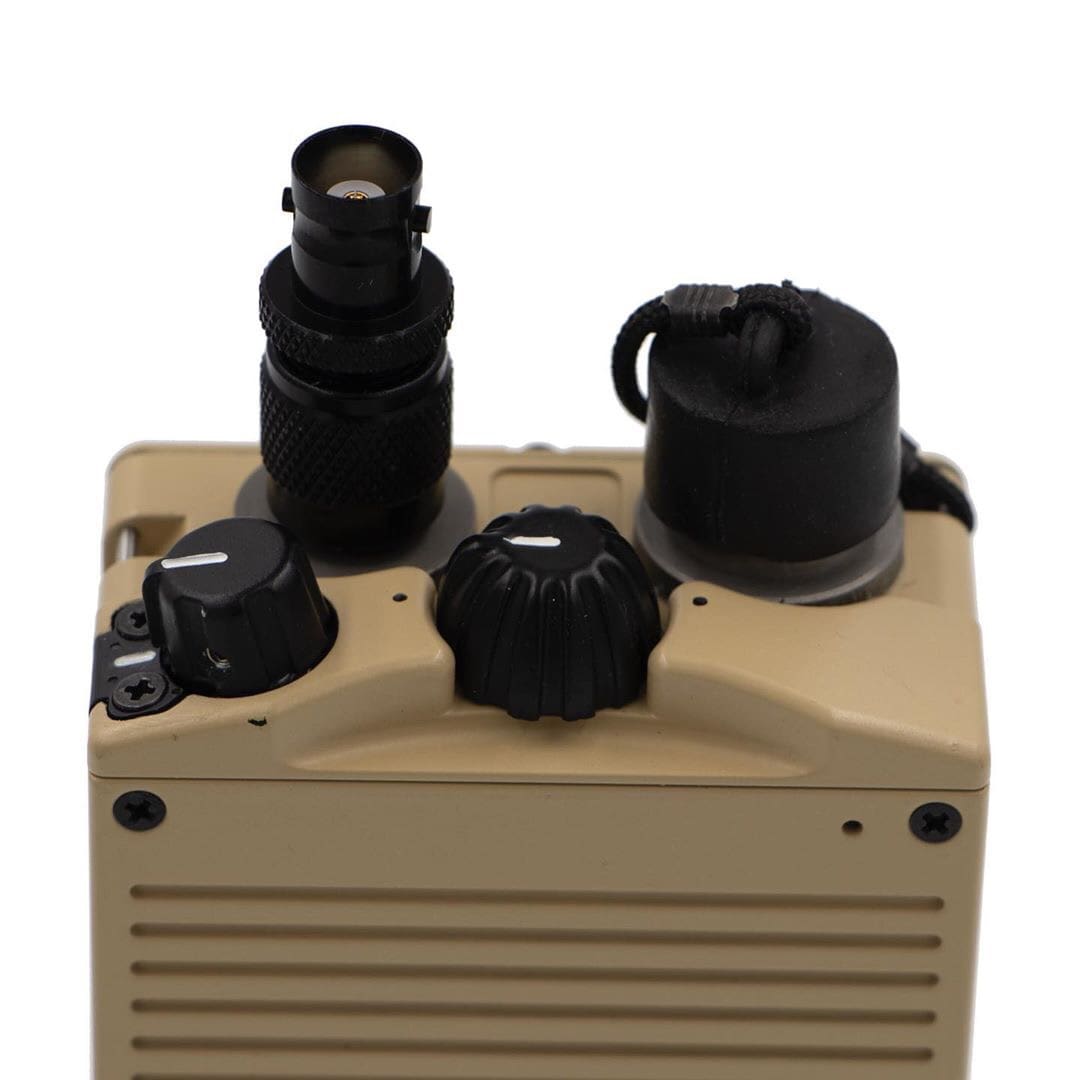
All black TNC to BNC adapters available from DISCO32.com.
MARINE CORPS BASE QUANTICO, Va. —
A Marine Corps Systems Command fire support device will be one of several communication technologies demonstrated at Island Marauder 2019.
The Target Handoff System version 2.0 is a lightweight, fire control system that employs commercial off-the-shelf, shock-resistant tablets to perform various targeting functions. The man-portable technology helps ascertain global positioning coordinates and call for fire support.
It allows Marines to use a single system to control close air support as well as artillery, mortars and naval surface fire support missions.
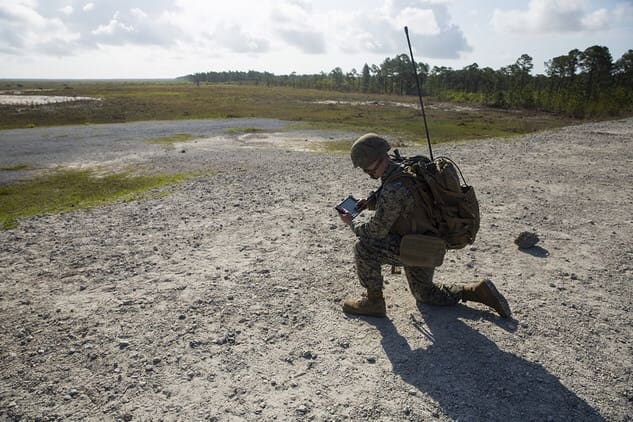
“THSv2 is the digital fire support Program of Record for the Marine Corps,” said Jeff Nebel, Fire Support Coordination team lead at MCSC. “It is a modular equipment suite that provides the warfighter with the capability to quickly and accurately identify and locate targets, and transmit that information digitally to fire support systems or weapons platforms.”
Fielded in fiscal year 2018, THSv2 enables the Marine Air-Ground Task Force to view an updated satellite image of the topography of a location. The technology provides a platform for receiving and manipulating video information. It can also be used as a controller for unmanned and autonomous systems.
“The system decreases the probability of incorrect data transfer of the initial fire request by providing a digital communication link between the observer and fires platform,” said Nebel.
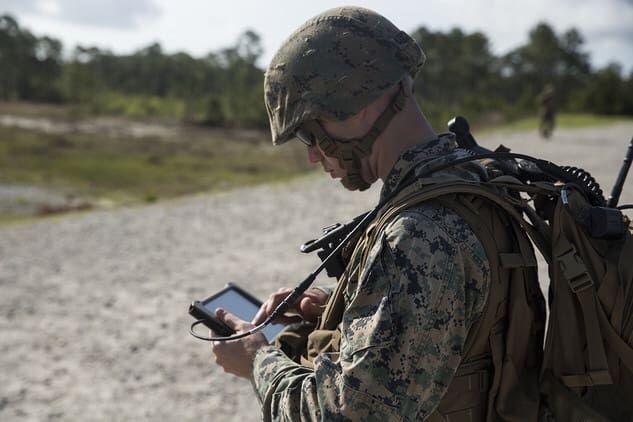
The Corps has leveraged electronic tablets—including the MAGTF Common Handheld—to support the warfighter. Like MCH, THSv2 is software embedded into a tablet. However, MCH is primarily used for situational awareness on the battlefield, while THSv2 feeds information to Advanced Field Artillery Tactical Data System and other fire support and weapons platforms.
THSv2 is interoperable with several other technologies, including the AN/PRC-117 radio, Naval Fire Control System and the Common Laser Range Finder-Integrated Capability. At Island Marauder 2019, Marines will demonstrate the interoperability of THSv2 with other communication systems, including Networking on the Move.
Engineers and analysts for the THSv2 emphasize its significance in completing missions on the battlefield.
“The Target Handoff System version 2.0 is important to the warfighter because it speeds up the kill chain and reduces human error by not requiring targeting information to be passed via voice,” said William Bensch, an analyst for THSv2. “Everything is done digitally.”
Since its fielding, THSv2 has received positive feedback from Marines who participated in various live-fire events and other training. Nebel hopes annual hardware and software updates will make the technology even more useful to the warfighter.
“It’s a piece of the latest and greatest in cutting edge technology,” said Bensch. “The system is robust enough to be expanded upon. We’re looking to provide the warfighter with the best equipment to engage the enemy faster and more efficiently—and THSv2 does that.”
Story Matt Gonzales, MCSC Office of Public Affairs and Communication | Marine Corps Systems Command
Photos by PFC Taylor W. Cooper
LONDON, Sept. 11, 2019 (DSEI STAND S-7 310) — L3Harris Technologies (NYSE:LHX) has been awarded contracts from two European nations totaling more than $100 million for Falcon manpack and handheld tactical radios. Deliveries of the AN/PRC-158, AN/PRC-160, AN/PRC-152A and AN/PRC-117G radios are underway, with completion expected in 2020.

The L3Harris AN/PRC-158 multi-channel manpack radio features a two-channel, software-defined architecture with integrated cross-banding between waveforms – providing new advanced capabilities while maintaining backward interoperability with legacy radios. The AN/PRC-160 is a stand-alone solution that provides data speeds up to 10 times greater than other existing high frequency radios. The AN/PRC-152A is a wideband networking handheld radio that provides simultaneous voice, video and data in a small form-factor, with ad-hoc capabilities. The AN/PRC-117G manpack is software defined, easily upgradeable with new waveforms such as MUOS, and is also NINE Suite B encrypted – allowing users to securely and easily interoperate with U.S., NATO and regional partners.
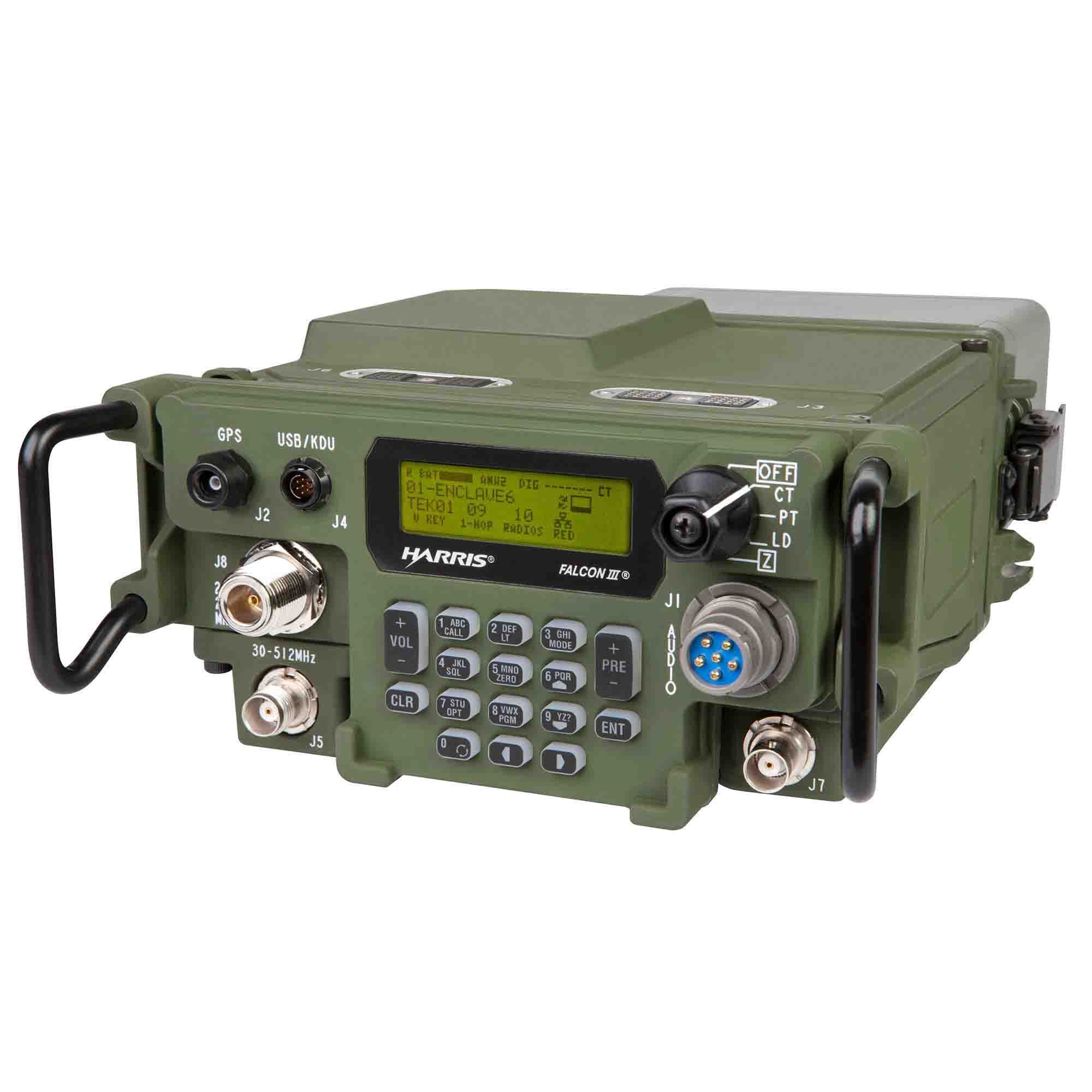
“Success in coalition operations depends on strong coalition partners and robust information sharing, from mission information down to voice communications,” said Keith Norton, Vice President, L3Harris Communication Systems. “These proven L3Harris radios are part of a series of overlapping European modernization programs to deliver advanced narrowband and wideband networking capabilities with greater interoperability for U.S. and other NATO allies during coalition operations.”
LONDON (DSEI STAND S-7 310)
Sep 10, 2019
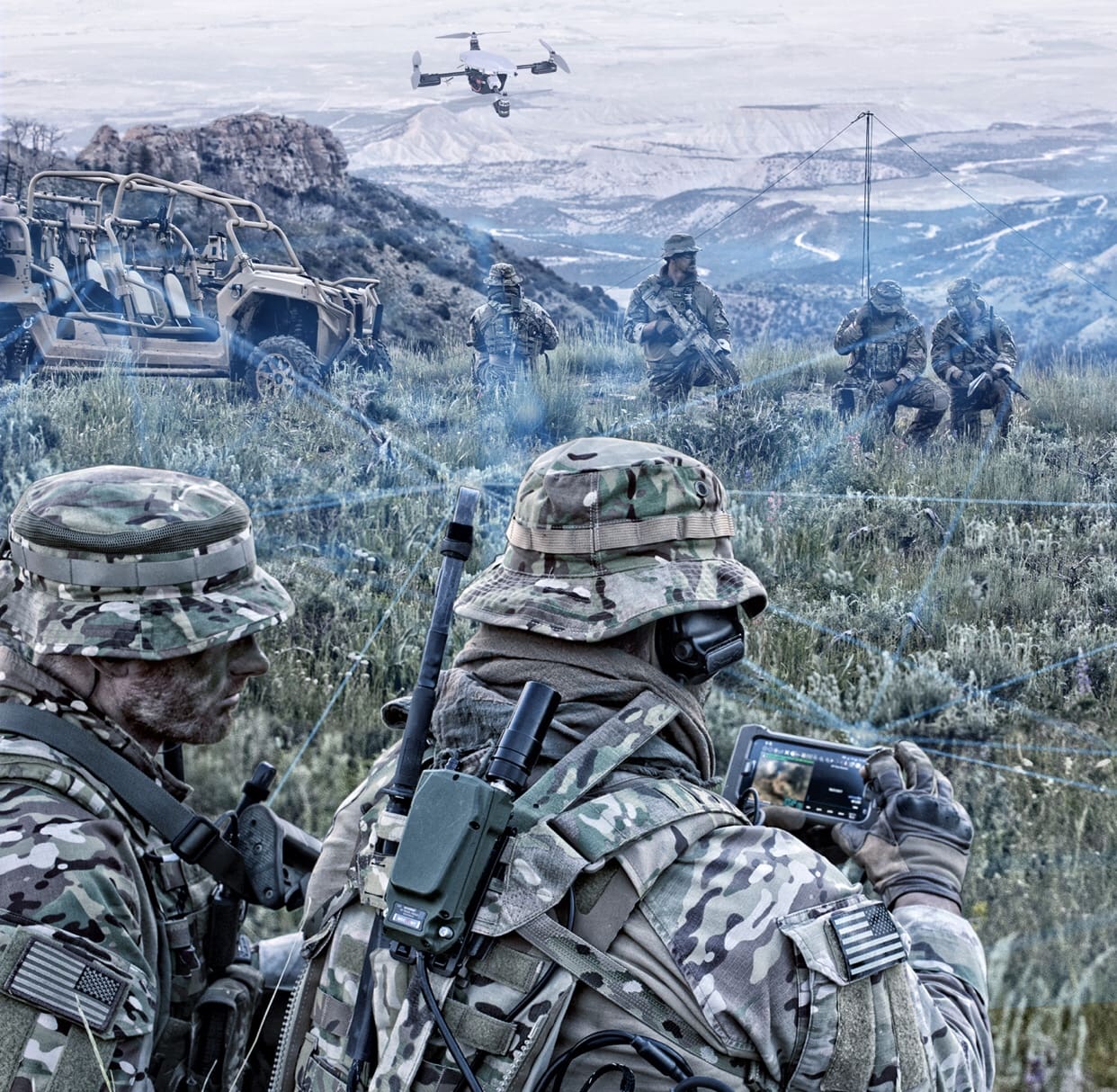
Highlights:
• Radios offer software defined, multichannel capabilities in a single, integrated, power-efficient platform
• Delivers next-generation capabilities and full interoperability with previous Falcon radios
• Provides resilient communications for congested/denied environments
L3Harris Technologies (NYSE:LHX) will showcase members of its Falcon IV® family of radios – which offer users an integrated view of the battlefield in a single, multichannel platform – at the Defense Security Equipment International (DSEI) 2019 tradeshow in London September 10-13.
The Falcon IV® family of radios delivers the convergence of next-generation capabilities including HD full-motion video, situational awareness, voice, multi-channel crossbanding and enemy RF sensing and awareness in a single, integrated, power-efficient platform.
Capabilities of the Falcon IV® platforms include:
• Multiband/multi-mission: enables users to match the right frequency band that is most appropriate for the mission.
• Library of waveforms: enables full primary, alternate, contingency and emergency communications allowing users to complete their mission in congested and denied RF environments.
• Multi-channel: ability to access numerous channels eliminates the need to carry multiple radios.
• Extended wideband: increased throughput for high-definition, full-motion video in an easy-to-deploy network mode.
• Software defined encryption: L3Harris’ Sierra II and Denali® security architectures provide high-data-rate encryption with the ability to modernize with a simple software update that requires no hardware replacement.
• Crossbanding: controlled management of information (voice, data, images) and access from disparate groups, providing simplified command of complex or joint operations.
• Mission modules: standard interfaces enable seamless extension of the platform’s capabilities.
“The Falcon IV® family demonstrates L3Harris’ commitment to advancing tactical communications to give our warfighters the next-generation capabilities and situational awareness they need on today’s multi-domain battlefield,” said Dana Mehnert, President, L3Harris Communication Systems. “L3Harris’ Falcon family ensures the warfighter has the security, interoperability and resilient networking capabilities needed to maneuver, fight, and win on the contested and congested battlefield.”

DSEI 2019, London, Stand number N5-352: Domo Tactical Communications (DTC), the wireless communications specialist, celebrates recent successes in trials demonstrating its SOL8SDR-H as a MANET Mesh Soldier Data Radio, proving compatibility with ATAK and other situational awareness applications.
Sharing PLI, mapping data, voice, messaging and mission plans – and operating without the need for external infrastructure – gives users in the field a significant advantage. A well-informed warfighter can make better decisions to carry out their objective as efficiently as possible and without unnecessary risks.
The groundbreaking SOL8SDR-H Handheld Radio provides the possibility to operate in channel bandwidths down to 1.25MHz for extreme range performance at very low power making it the ideal choice for MANET Soldier Data Radios where reliability to communicate in the harshest of environments whilst maintaining LPI/LPD is imperative.
Truly software-defined and future-proofed, the SOL8SDR can host multiple waveforms as the mission evolves. In addition to MiMo and SiMo Mesh solutions, the SOL8SDR today can be a Unidirectional COFDM transmitter – including interoperable DVB-T modes – and a streaming COFDM receiver ideal for Remote Video Terminal (RVT) applications.
The SOL8SDR-H is designed to meet the requirements of applications where robust encrypted, mobile communication links are needed to provide enhanced situational awareness in the absence of fixed infrastructure. Targeting first responders, security and military personnel, the SDR-H utilises the DTC COFDM waveforms to provide High Bandwidth data in challenging, dynamic, Non-Line of Site (NLOS) environments where our users operate. It combines a familiar “Soldier Radio” physical form factor, robust construction and simplified user interface with the ability to use industry-standard battery packs, chargers and webbing pouches.
The SOL8SDR-H Handheld Radio and our other Video and IP products will be on Stand N5-352 during DSEI 10-13 September 2019. For more information, please visit www.domotactical.com or email solent.info@domotactical.com.
Rohde & Schwarz demonstrates tactical and strategic intelligence and digital communications sovereignty, as a systems partner and integrator for planning, developing, manufacturing and implementing secure communications architectures and monitoring networks. The privately owned company showcases an innovative portfolio of interoperable, high-performance solutions for deployment on land, in the air and at sea.
London, September 9, 2019 – At this year’s DSEi, taking place in London, Great Britain from 10 to 13 September 2019, Rohde & Schwarz pushes information superiority, situational awareness and spectrum dominance to the next level, presenting its full technology portfolio on booth S1-350. Showcased are EW/SIGINT (electronic warfare/signals intelligence) systems, integrated communications on the high seas, on land and in the air, networked encryption devices and test and measurement solutions for radar and EW, alongside counter-UAS systems.
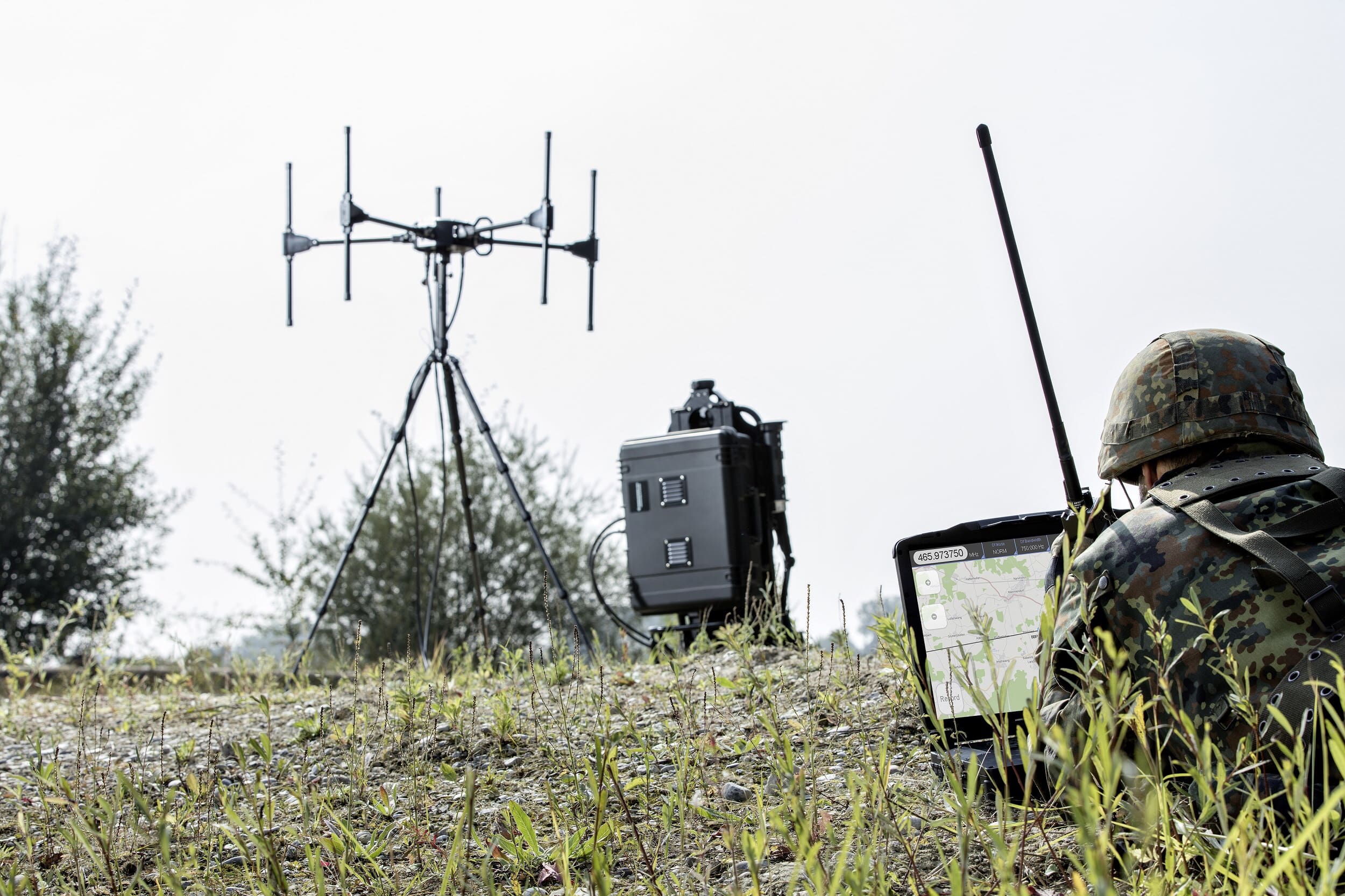
Rohde & Schwarz will showcase its operationally proven NAVICS integrated communications system for internal and SOVERON for external communications on all classes of ships. Relying on commercial IT technology to a large extent, the system is especially cost-effective, and its modern graphical user interface (GUI) makes it intuitive to operate. The system is fully IP based, allowing the integration of further communications services such as Voice-over-IP (VoIP), broadcast, alarm functions and shipborne telephone systems. Rohde & Schwarz will equip the Royal Navy’s Type 26 Global Combat Ship with an integrated communications system, built around the NAVICS, under a contract from BAE Systems, covering both internal and external communications.
As a leading supplier of EW/SIGINT solutions, Rohde & Schwarz is THE One-Stop Shop for reliable and field-proven EW, offering an exceptional portfolio and comprehensive functionality. In London, the company will showcase advanced EW systems for enhancing the situational awareness during operations in the field. The presented ELINT system features components of next generation ELINT intercept solutions that have been established on the market for years. The core component is a new 8-channel wideband ELINT concept, with 2GHz bandwidth, collecting and analyzing modern LPI signals and likewise legacy radar emissions. Exhibits also include a cellular network analysis system for supporting reconnaissance missions with focus on non-military communications. Moreover, Rohde & Schwarz will present a counter-UAS solution that provides reliable drone detection and countering capabilities even under challenging signal scenarios. The modular and scalable systems can be deployed on a variety of platforms and are in operation in the field several dozen times.
With its expertise in test and measurement, Rohde & Schwarz is also a leading provider of dedicated test solutions that help developers and engineers address the latest challenges in advanced radar and EW system design. At DSEI, the company will showcase its state of the art solutions for testing multifunctional radar systems, radar warning receivers and deceptive jammers/DRFM.
Addressing land-based platform requirements, SOVERON provides government customers with a secure, high-performance network architecture based on state-of-the-art hardware and software. SOVERON creates technological independence, scalable and modular according to customer requirements thus enabling digital sovereignty. As key components of the SOVERON architecture, Rohde & Schwarz presents its innovative SOVERON software defined radios (SDR) for tactical and airborne communications scenarios. For these SDRs, the company has designed high data rate, anti-jam waveforms to match diverse mission requirements. For every communications scenario, users can select the waveform and encryption that best suit their requirements in terms of range, data rate and jam resistance.
Furthermore, Rohde & Schwarz displays a broad range of hardware and software products to effectively protect networks and critical infrastructures against attacks. These encryption solutions protect authorities, organizations and enterprises against espionage and data manipulation. The Rohde & Schwarz network encryption devices are approved by the German Federal Office for Information Security (BSI) and can be used flexibly with many stationary and mobile applications.
RE Factor Tactical is proud to announce the release of our new IR Hybrid Field Patch line! All of these Hybrid IR Field Patches are made by IR.tools and are designed to withstand prolonged use and wear in any austere environment our nation’s warfighter find themselves in. There are a number of patches that will be available for purchase as well as a custom option that can be used for individual callsigns, unit designators, names, or other important information. Each patch is embedded with sandstorm technology, a durable design that won’t peel and offers a much brighter reflection. The list of available Patches includes
American Flag IR Hybrid Field Patch

Gadsden Flag IR Hybrid Field Patch

EOD IR Hybrid Field Patch

CCT IR Hybrid Field Patch

Custom IR Hybrid Field Patch (Pair)

All of the above listed products are IR Patches that are available in multiple sizes and colors. The Custom IR Hybrid Field Patches are available in four different sizes. The sizes available are 3.5 x 2” , 4 x 2” , 5 x 3” , 6 x 3” . The Custom IR Hybrid Field Patch can have up to 15 characters to be used for last names, call signs, or unit designators.
Custom IR/ Glow in the Dark Patch (Pair)

We are also proud to release the Custom IR/ Glow in the Dark Patch as well that combines IR capabilities with bioluminescent (Glow in the Dark) capabilities into one patch. This patch is customizable and can have up to 15 characters to be used for last names, call signs, or unit designators. (This item is sold as a pair)
For more information please go to tacticalequipment.com
The Swedish police have announced in two contract award decisions that they intend to sign two framework agreements with INVISIO regarding communication equipment. The contract award decisions are not to be regarded as signed agreements.
The agreements include communication equipment with active hearing protection and are framework agreements valid for two years with the possibility to extend for another two years. No volume is guaranteed during the contract periods; call-offs will be made when the need arises.
The tendering process may be subject to review within ten days of the award decision.
INVISIO intends to provide additional information when the company has such and when the agreements are signed.